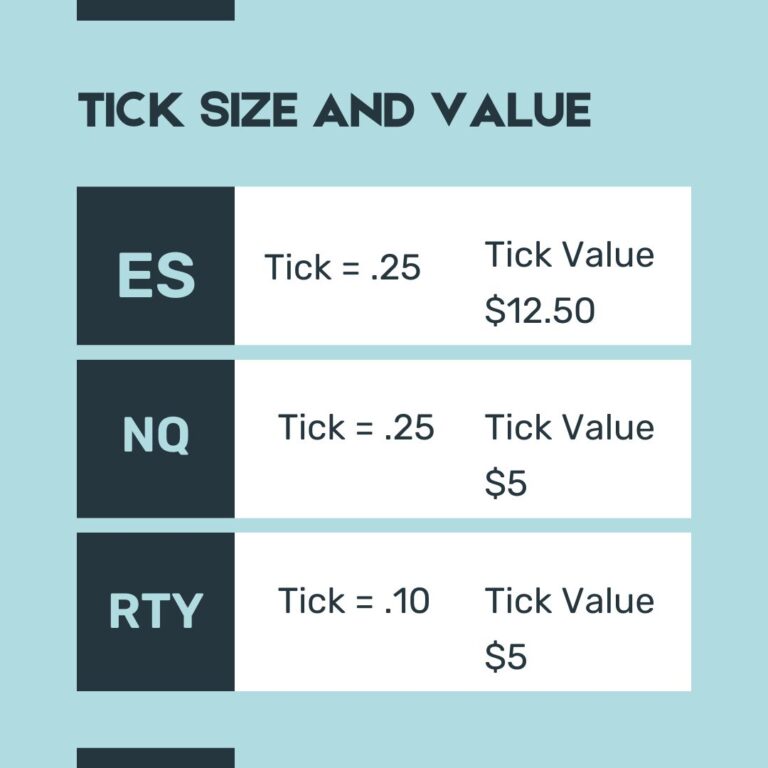Why You MUST Have Multiple Accounts at Multiple Prop Firms

Why You MUST Have Multiple Accounts at Multiple Prop Firms
Why should you take challenges with multiple prop firms? It’s a question many traders ask, and the answer lies in the age-old wisdom of not putting all your eggs in one basket. By engaging with multiple prop firms, you’re diversifying your trading portfolio, spreading risk, and accessing various opportunities that might otherwise be out of reach.
In a world where market trends can shift in the blink of an eye, depending solely on a single firm could lead to significant losses. On the flip side, having multiple accounts across different firms can offer a safety net and greater control.
In the following sections, we’ll explore the strategies to manage multiple accounts, including the pros and cons of copy trading, techniques to reduce risk, and real-world applications. Understanding how to leverage multiple prop firms can make the difference between thriving in the trading world or struggling to stay afloat. Let’s dive into the details.
Managing Multiple Accounts with Copy Trading Software
I’m sure you’ve heard you can trade multiple accounts with each firm, with some allowing as many as 20 accounts. And if you’re like me, you’re probably wondering how on earth you could manage so many. The task might seem as daunting as juggling flaming torches, but here’s where copy-trading software comes to the rescue.
Various firms offer unique solutions for managing multiple accounts. Apex Trader Funding, for instance, provides a copier that works with Rithmic. If you’re using Ninja Trader, Repikanto can be your go-to tool. Tradovate even has a built-in Group Manager for those who prefer an all-in-one solution.
However, it’s essential to know that not all copiers are created equal. Some, like Tradovate’s copier, can only copy trades accessed within the same Tradovate login. It’s like having a universal remote that only works with one specific brand of electronics. Others, on the other hand, can be set up to trade between brokers, offering more flexibility and reach.
 This diversity in copy trading tools provides traders with various options to suit their unique needs and strategies. But what exactly is copy trading, and how does it fit into the grand scheme of managing multiple accounts across different firms? Let’s delve deeper into the mechanics and discover how to wield these tools effectively. Whether you’re a seasoned trader or a newcomer ready to take on the market, understanding these tools can be your key to success in the multi-firm trading arena.
This diversity in copy trading tools provides traders with various options to suit their unique needs and strategies. But what exactly is copy trading, and how does it fit into the grand scheme of managing multiple accounts across different firms? Let’s delve deeper into the mechanics and discover how to wield these tools effectively. Whether you’re a seasoned trader or a newcomer ready to take on the market, understanding these tools can be your key to success in the multi-firm trading arena.
Copy trading might sound like a sci-fi concept, but in the trading world, it’s a practical tool that can lead to more control and strategic planning. Imagine you have one main account where you make your well-thought-out trades. Now, with the magic wand that is copy trading, those trades can be replicated across multiple accounts with the click of a button.
But what’s even more appealing is how copy trading can affect a trader’s psychology. Let’s say you’re trading with a small size in your main account. By copying these small-size trades to multiple accounts, you’re not only spreading the risk but also easing the mental pressure.
This strategy is a boon, especially for traders who may grapple with the fear or stress that often accompanies large trades. I’ve been there myself, feeling the weight of a big decision. Copy trading, when used judiciously, can help maintain balance and a clear head.
There are a few considerations to keep in mind, though:
- Choosing the Right Tool: As mentioned before, options vary between firms. Knowing your platform is key.
- Understanding Limitations: Some copiers work only within a single account, while others span brokers.
- Managing Size Effectively: Being mindful of the size and how it’s copied across accounts ensures that you’re not unintentionally taking on too much risk.
In essence, copy trading is more than just a convenience feature. It’s a strategic approach that can enhance your trading experience, keep you focused, and assist in maintaining a calm and collected trading psychology. So next time you find yourself pondering over a big trade, remember: you have options, and they might just make your trading life a little less stressful.
The Pros and Cons of Copy Trading
Copy trading isn’t just a trend; it’s a significant component of modern trading strategies. But as with any tool, it comes with its benefits and potential drawbacks.
Pros
- Efficiency and Time-Saving: Managing multiple accounts manually is time-consuming. Copy trading automates the process, letting you focus on strategy rather than logistics.
- Psychological Benefits: As we’ve explored, trading small sizes copied across accounts helps ease the mental burden. Think of it as diversifying your investment in peace of mind.
- Consistency Across Accounts: Copy trading ensures that all accounts mirror the primary one. It’s like having your favorite song playing in every room of the house, keeping the vibe consistent.
- The power of compounding. Consider that you only need base hits to make a lot of money, when magnified over 20 or more accounts. Just $100 a day on average can mean a high 6-figure income!
Cons
- Potential Risks and Errors: If a trade goes south in the main account, it will do so in all the copied accounts as well. It’s the flip side of the coin or the ripple effect of dropping that coin into a pond.
- Loss of Individual Control: While convenience is king, you might lose the ability to tailor specific strategies for individual accounts. It’s a one-size-fits-all approach, and sometimes that size doesn’t fit perfectly.
- Software Limitations: Depending on the platform and the copier, you may face restrictions on what can be copied and where. It’s like a universal remote with a few missing buttons.
- The risk of technology failure. Accounts are blown every day by user and or technology errors using copy traders. Be sure you understand how your trader works and take care in your execution and monitoring to reduce the risk of failure.
Finding the Right Balance
I’ve been there, staring at screens and wondering how to make the most of copy trading without falling into its traps. The key is understanding your needs, assessing the available tools, and recognizing that copy trading is a part of the strategy, not the whole game. It’s about using it when it makes sense and maintaining the freedom to make individualized decisions when needed.
To wrap this section up, copy trading is akin to a double-edged sword. It can be your ally in efficiency and psychological comfort, but it requires careful handling and a clear understanding of its potential and limitations. Stay tuned, as we will further explore ways to reduce risks and make the most of multi-firm trading.
Risk Management: Smart Strategies with Multiple Accounts
When you’re managing multiple accounts across different prop firms, it can seem like a juggling act. But there’s a method to the madness, and with 20+ accounts at your disposal, strategic grouping and thoughtful planning can be the key to success.
Grouping Accounts: A Safety Net
By dividing your 20 accounts into sets of 5 to copy trade, you create a flexible and robust system. It’s like having different teams in a relay race; if one stumbles, the others keep going. This reduces the likelihood of you losing all your accounts during one bad day.
The Danger of Loss Streaks
Losses happen to every trader, and sometimes they come in streaks. Spreading trades across all accounts simultaneously could be like putting all your eggs in one basket. Grouping helps prevent this by ensuring that if one set struggles, the others can continue to thrive.
Rotating Through Groups: Your Daily Playbook
Consider setting up a rules-based system for how you trade your groups. Here’s a glimpse into my daily playbook:
- Group 1: If the first trade is green, move to Group 2.
- Group 2: A small red? No worries, small losses are part of the game. Try again to get even or let this group rest.
- Group 3: Patience is key. Wait for the right setup, and you’ll likely find success here.
- Group 4: Reserved for the power hour.
- Find a perfect afternoon set-up. Try once more to turn around that red group.
 Limit your losses to three tries for any one group. I’ve often found success with the first trade, so consider moving yesterday’s losing group to the beginning of the queue the next day. Rotating the groups makes it less likely that you’ll blow accounts, and if you do, it’ll only be one set of accounts, not your whole portfolio.
Limit your losses to three tries for any one group. I’ve often found success with the first trade, so consider moving yesterday’s losing group to the beginning of the queue the next day. Rotating the groups makes it less likely that you’ll blow accounts, and if you do, it’ll only be one set of accounts, not your whole portfolio.
Combatting Common Trader Psychology Pitfalls: Your Personal Safety Valves
Let’s face it, trading can sometimes feel like a psychological maze. From the urge to overtrade to the burning desire for revenge after a loss, or even the itch to trade out of sheer boredom, these pitfalls are familiar to many traders. I’ve been there myself.
With multiple accounts in your arsenal, you have a unique opportunity to create personalized safety valves for these moments. Think of them as emergency brakes or special compartments where you can vent these trading pressures without risking everything.
The “Gambling” Account: Taming the Overtrading Urge
 Not finding your A+ setup and feeling the urge to jump into a trade anyway? I always have a fresh challenge account set up for “gambling.” It’s like having a spare room where you can let loose without disrupting the entire house.
Not finding your A+ setup and feeling the urge to jump into a trade anyway? I always have a fresh challenge account set up for “gambling.” It’s like having a spare room where you can let loose without disrupting the entire house.
The “Revenge” Account: Venting Frustration
Losing in your main accounts and feeling the urge to revenge trade back to even? Use just one of your accounts to take out that frustration instead of all 20. If you blow it, it’s a small setback, like spilling coffee on a single page of a book, rather than a major catastrophe. Remember that if you’ve followed your plan, your red days should be easy to come back from.
The “Let It Ride” Account: Locking in Your Gains
Have an issue with giving back your progress or profits? Set strict rules for your accounts and groups. Once they’re green, stop trading and move to another group. All your groups green and feeling hot? Always have one account where you can let things ride, like having a playground where you can still have fun without breaking the rules of the game.
Ready to Start trading with multiple prop firms?
You now have the insights, the strategies, and the game plan to embark on a trading adventure with multiple prop firms. Why limit yourself to one path when you can explore many? I’ve been down this road, and I can assure you, the scenery is worth it.
It’s time to embrace the diversity and resilience that comes with managing multiple accounts. But where do you start? Visit our prop firm reviews page to get an in-depth look at the best firms that align with your trading style and goals.
From comprehensive reviews to tailored insights, we have all the tools to help you take the first step in building your multiple prop firm strategy. Let’s turn your trading journey into a thriving adventure. Click Here to Start exploring today, and may the markets be ever in your favor! Happy trading!






